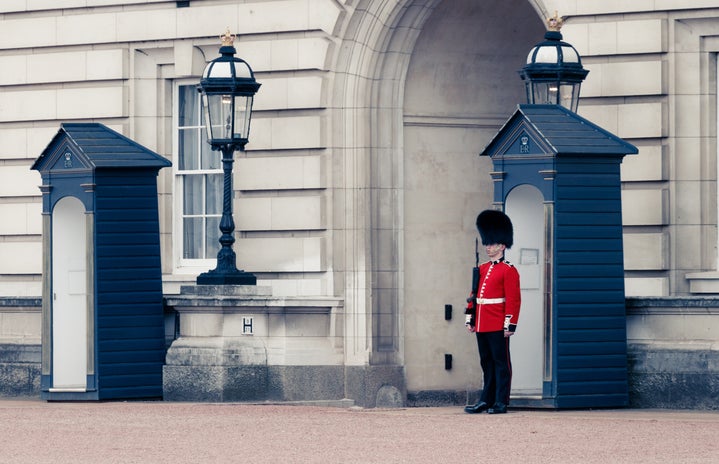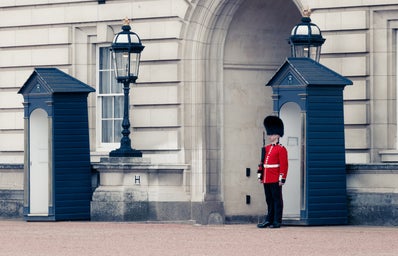Over the past century, the royal family have increasingly become influential in creating some of the fashion industry’s biggest trends. It can be said that the fashion choices taken by the royal family are cleverly used to communicate specific messages to the public, and to adhere to rules of royal fashion.
In the recent years Kate Middleton (The Duchess of Cambridge) and Meghan Markle have arguably become the predominant figures, at the forefront of the wave of “royal” and mainstream fashion. Perhaps, this is down to the significant role that social media has taken in popularising royal fashion to the public. Yet, before Meghan and Kate, in the 1980s and 1990s figures such as Princess Diana and the Duchess of York, made profound effects upon the fashion world, with their unique and iconic styles which partook in the popularisation and increased interest taken in royal fashion.
Moreover, the popularisation of royal fashion even extents out to Princess Alexandra (1844-1925), who forged her own style and look. Her popularity with the public resulted in her becoming an early “influencer” and trend setter in fashion. Notably, she was the first woman in the British public to favour tailored looks for daytime outings; a concept which was previously only associated with riding coats and other sportswear, this soon became a popular fashion trend.
In our current moment, Kate Middleton is a huge and influential fashion force, something which was exemplified after a virtual interview the BBC had with Duke and Duchess of Cambridge. In this interview Kate appeared in a striped Breton top, reports afterwards noted that that searches for the striped Breton top that Kate wore, (or similar to it), rose 36% in just 24 hours. Meghan Markle too, has had a similar fashion influence and cult following to her clothing, something which has been termed the “Meghan effect”: a term that describes the phenomenon where every item of clothing she wears, sells out immediately!
However, not everyone shares the same interest in the royal’s fashion. Over the past decade, avid watchers of the royal family have criticised the media for its continual fixation on the royal’s fashion, especially when it outshines the media coverage of the charitable works and other royal duties the royal family undertake. Having said that, I like many others, see that the popularity surrounding the royal’s fashion has a positive influence in generating exposure and interest in the organisations and charities the royal household support, which otherwise may not have occurred.
Despite the rule of political neutrality, the Queen and “the Firm” must take in the public eye, there has been small nods made by certain royals towards movements or organisations that support equality such as #MeeToo. Kate Middleton demonstrated her solidarity to the cause at the 2018 BAFTAs, by wearing a black sash over her dark green dress. A fashion statement that aligned herself with the movement.
Interestingly, the role of fashion in the royal family can quite literally come down to the way a purse is held, strategically in their left hand so that their right hand is free to wave, shake hands and greet the public. Similarly, the Queen sends signals to her staff through her handbag. For example, when she wants to leave dinner, she simply places her bag on top of the table, which lets her staff know that the party is ending, and she is ready to depart. Additionally, when she is in conversation and switches her handbag to her other hand, it means she would like to politely wrap up the conversation.
Let’s now take a look at the Queen’s fashion…
Noticeably, in any public meeting she attends the Queen appears dressed in bright clothing. The reason for this is explained in the documentary The Queen at 90, in which, Sophie (The Countess of Wessex) states the reasoning such fashion choices: ‘she needs to stand out for the people to be able to say, ‘I saw the queen’’. The Queen’s fashion is designed in mind of being easily noticeable to the spectators in a crowd full of people. This is done in order to affirm her presence and rule to the public.
There are specific fashion rules that the royals must adhere to, and one rather morbid rule that they must abide to is, always packing a black outfit in case a member of the family dies. This rule was implemented after the death of King George VI (1952), when his daughter Princess Elizabeth did not have a black outfit with her on her tour in Kenya, this meant that on her way back to England she had to wait inside the plane to be given black clothing before she could make her public appearance.
Following on, wearing a tiara is a privilege that is reserved only for married women. As it explicitly ‘signals the crowing of love and the loss of innocence to marriage’ (Geoffrey Munn, Tiaras- A History of Splendour). Similarly, for the male royals, military dress code is reserved for state occasions (remembrance day, royal weddings), or any services that honour the British troops, a tradition that has been withstanding since the nineteenth century.
Here are some interesting facts to finish up on:
- The Queen actually has someone who breaks her shoes in for her.
- Weights are sown into skirt and dress hems to prevent them from blowing up in the wind.
- Gloves are encouraged (the queen uses gloves to protect herself from germs when she attends official engagement).
- Skirts for royal women should never be more than three or four inches above her knee.
- Nail colour must always be neutral!
I think that it has been unveiled that fashion and royalty have an interesting relationship with one another, one that solidifies tradition and etiquette. Over the recent years, royal fashion has gained a buzz and interest from the public and the media, which has especially led to female royals, such as Kate Middleton becoming a fashion influencer in her own right. Moreover, what we can see is that royal fashion is not as simple as it might initially appear. There is in fact careful planning and styling behind the clothes of the royal family.


